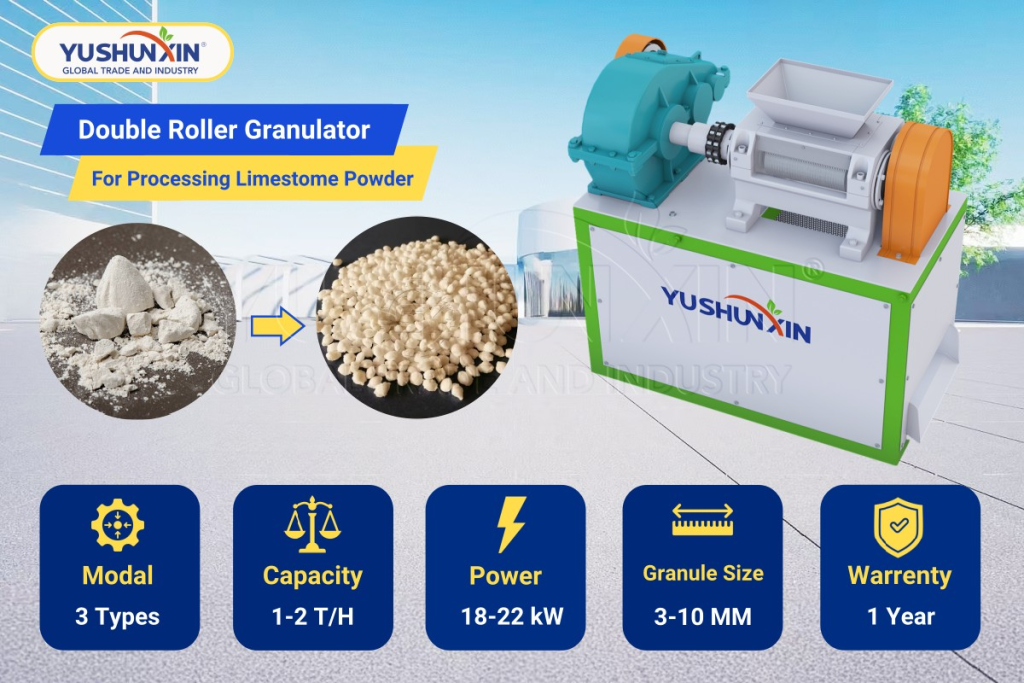
In the modern agricultural landscape, efficiency, consistency, and sustainability are the cornerstones of successful fertilizer production. Granulation technology plays a critical role in transforming raw powder materials into uniform, high-quality fertilizer granules that farmers can easily handle and apply. Among the most advanced systems in this field are the npk granulation line and phosphate granulation equipment—two essential solutions that enable manufacturers to meet the increasing global demand for nutrient-rich fertilizers.
The Importance of Granulation in Fertilizer Manufacturing
Granulation is a process that converts fine powders into solid granules of uniform size, shape, and strength. This transformation not only improves the physical characteristics of the fertilizer but also enhances nutrient release and reduces dust formation during handling and transportation.
For compound fertilizers such as NPK (Nitrogen, Phosphorus, and Potassium), granulation ensures that each granule contains a balanced ratio of nutrients. This allows farmers to deliver consistent nutrition to crops, improving yield and soil health while minimizing fertilizer loss due to leaching or volatilization.
Understanding the NPK Granulation Process
An npk granulation line is designed to produce compound fertilizers by mixing different raw materials—urea, ammonium sulfate, potassium chloride, and phosphate compounds—into homogenous granules. The process typically includes several key stages:
- Raw Material Batching and Mixing – Precise feeding and mixing systems ensure accurate nutrient ratios according to the target formula. Automatic batching machines control ingredient proportions, guaranteeing consistency from batch to batch.
- Crushing and Grinding – Large crystalline or solid materials are pulverized into fine powders to facilitate uniform mixing and granule formation.
- Granulation – This is the heart of the process. The NPK line employs a double roller extrusion granulator, which compresses the mixed materials into dense granules without adding water or binders. This dry granulation method is energy-efficient and eliminates the need for drying and cooling equipment.
- Screening – Once granules are formed, they are screened to separate undersized or oversized particles, ensuring consistent granule size for the final product.
- Packaging – The finished NPK fertilizer granules are automatically weighed and packed for distribution, ensuring efficiency and minimal human error.
Unlike wet granulation systems, a dry npk granulation line operates without water, making it ideal for regions where water scarcity or high energy costs are major concerns. The absence of drying and cooling steps also shortens the production cycle and reduces energy consumption significantly.
Advantages of the NPK Granulation Line
The npk granulation line offers several distinct advantages that make it a preferred choice among modern fertilizer producers:
- Energy Efficiency: With no drying or cooling stages, operational costs are substantially reduced.
- Compact Design: The entire system requires less space, making it suitable for both large-scale and medium-sized production facilities.
- High Output: Depending on configuration, production capacity can reach 20 tons per hour or more.
- Stable Granule Quality: The roller extrusion method produces uniform, dense granules with strong compressive strength and minimal dust.
- Environmentally Friendly: Reduced dust emissions and energy consumption make it an eco-conscious choice for sustainable fertilizer production.
This technology supports the development of balanced fertilizers that enhance soil fertility, crop resilience, and overall agricultural productivity.
The Role of Phosphate Granulation Equipment
Phosphorus is one of the three essential macronutrients that plants require for root development, flowering, and energy transfer. However, phosphate materials such as single superphosphate (SSP) or triple superphosphate (TSP) are often available in fine powder form, which can be difficult to handle and prone to nutrient loss.
Here, phosphate granulation equipment provides an effective solution. This machine converts fine phosphate powders into solid, easy-to-apply granules without requiring binders or excessive moisture. The process involves high-pressure compaction using double roller presses, ensuring granules of consistent size and density.
Phosphate granulation not only improves product handling but also enhances nutrient stability during storage and transportation. Farmers benefit from more uniform application, improved nutrient availability, and less product waste in the field.
Key Benefits of Phosphate Granulation Equipment
- Versatility: Besides phosphate materials, this equipment can granulate limestone powder, metal powders, and other mineral materials.
- Low Energy Consumption: Dry granulation eliminates the need for thermal drying, saving power and reducing operational costs.
- Uniform Granules: Produces round, strong granules that dissolve efficiently in soil.
- Environmentally Safe: Minimal dust generation and waste production make it a sustainable processing solution.
- Scalability: Available in different capacities, from small-scale 1–3 t/h setups to industrial-scale 20 t/h systems.
Integrating NPK and Phosphate Granulation Systems
In many fertilizer plants, both NPK and phosphate-based products are in demand. Integrating a high-capacity npk granulation line with specialized phosphate granulation equipment allows manufacturers to diversify their product portfolio. For example, phosphate granules can be used as base materials in compound NPK formulations, creating a complete nutrient blend for crops.
Such integration not only boosts production efficiency but also increases profitability by catering to different segments of the agricultural market. Farmers can choose between balanced NPK fertilizers or phosphate-enriched products depending on their soil requirements.
Economic and Environmental Impact
Granulation technology contributes to sustainable fertilizer manufacturing in several ways. By minimizing energy use, reducing waste, and improving nutrient efficiency, modern systems lower the overall environmental footprint of fertilizer production. The ability to recycle dust and fines within the production line also minimizes material losses.
Moreover, fertilizer producers benefit from reduced costs per ton of output and higher product quality, which translates to increased competitiveness in both domestic and international markets.
Conclusion
As global agriculture continues to evolve, adopting efficient granulation technologies is no longer optional—it’s essential for staying competitive. The npk granulation line offers a comprehensive, energy-efficient solution for large-scale fertilizer production, while the phosphate granulation equipment provides precision granulation for phosphate and mineral-based materials.
Together, these systems empower manufacturers to produce high-quality, nutrient-rich fertilizers that meet modern agricultural demands—ensuring higher yields, healthier soils, and a more sustainable future for global farming.